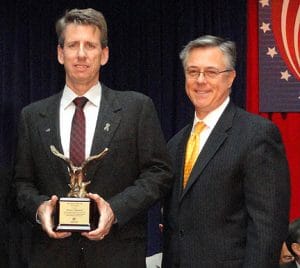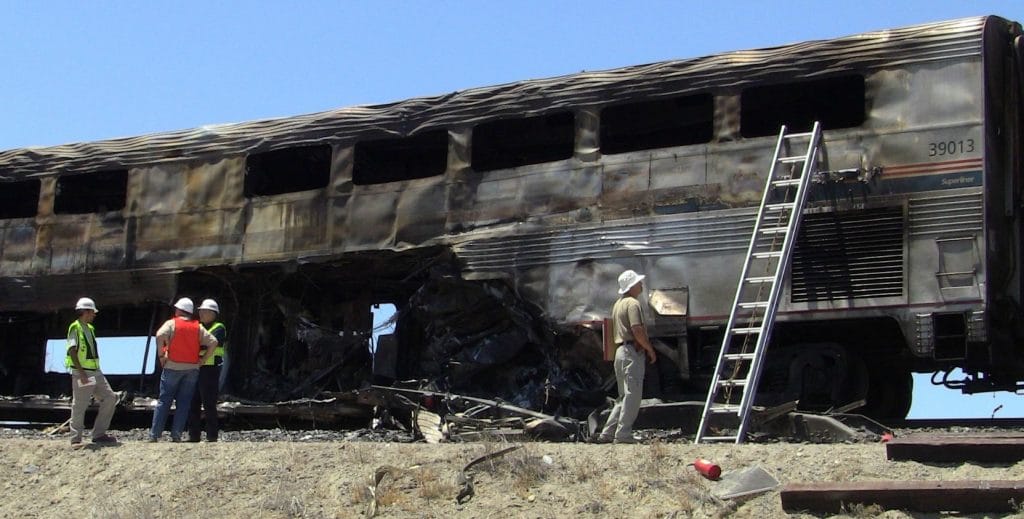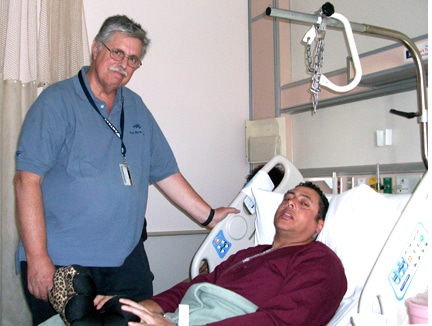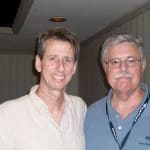Enter, center stage, two UTU heroes – Amtrak conductors Richard d’Alessandro and Loxie Sanders – a couple of regular rails, represented by the UTU and seemingly little different than neighbors down the street.

Their time of extreme selfless bravery came the night of June 24, when a tractor-trailer, traveling at high-speed, plowed directly into Amtrak’s westbound California Zephyr near Lovelock, Nev.
The crunch of steel meeting steel at a highway-rail grade crossing is gut wrenching; the derailing of rail passenger cars, unnerving; the sudden and rapid spread of all-consuming fire, deadly; and the presence of thick smoke, terrifying.
It was at that moment that d’Alessandro and Sanders became heroes. Nobody nominated them. Nobody asked them. Nobody expected it of them. Such is heroism.
With passengers disoriented, injured and frightened — many seemingly hopelessly trapped in two burning passenger cars – d’Alessandro and Sanders demonstrated why highly trained passenger-train conductors are essential for passenger and train safety.
d’Alessandro, initially knocked unconscious by the horrendous collision, awoke to find he was lying outside his passenger car on the ground, an arm broken and finger missing. In complete disregard for his own life, and ignoring his painful injuries, d’Alessandro climbed back into the flaming cars in search of disoriented and injured passengers. First one, then another, and still another, he led and assisted them to safety through emergency exit windows and into waiting arms on the ground.
Only when the two no longer could hear voices or find additional passengers did they take leave of the burning passenger cars.

Then Sanders, suffering smoke inhalation and a severely burned hand, remembered conductor Laurette Lee. Where was she? Once again, he climbed back into the mouth of burning and smoke-filled hell. Finding her dead beneath a metal door, Sanders lifted her body and carried it outside and away from the inferno.
Among the first to visit d’Alessandro and Sanders in the hospital following the accident was Amtrak President Joseph Boardman, who had taken the first available flight from Washington, D.C., to be at the scene of this horrific accident that claimed six lives and would have claimed many more had it not been for the selfless actions of d’Alessandro and Sanders.
On Nov. 3, d’Alessandro (UTU Local 166, Salt Lake City) and Sanders (UTU Local 1525, Carbondale, Ill.) were formally recognized in Washington, D.C., by the U.S. Department of Transportation for heroism. In presenting the awards, Transportation Secretary Ray LaHood cited both for saving lives “that went above and beyond the call of duty.”
And what did these two still humble heroes have to say after receiving the awards? They credited their classroom training, exercises and structured debriefings required under 49 CFR Part 238 as giving them the knowledge and tools.
Heroism, of course, can’t be legislated or regulated. Heroism comes from the heart and soul, and will long be remembered by dozens alive today only because when tragedy struck, well-trained and dedicated Amtrak conductors d’Alessandro and Sanders were present.
For more information on this accident, click on the following links:
www.ntsb.gov/investigations/2011/miriam_nv.html
www.ntsb.gov/news/2011/111102.html


